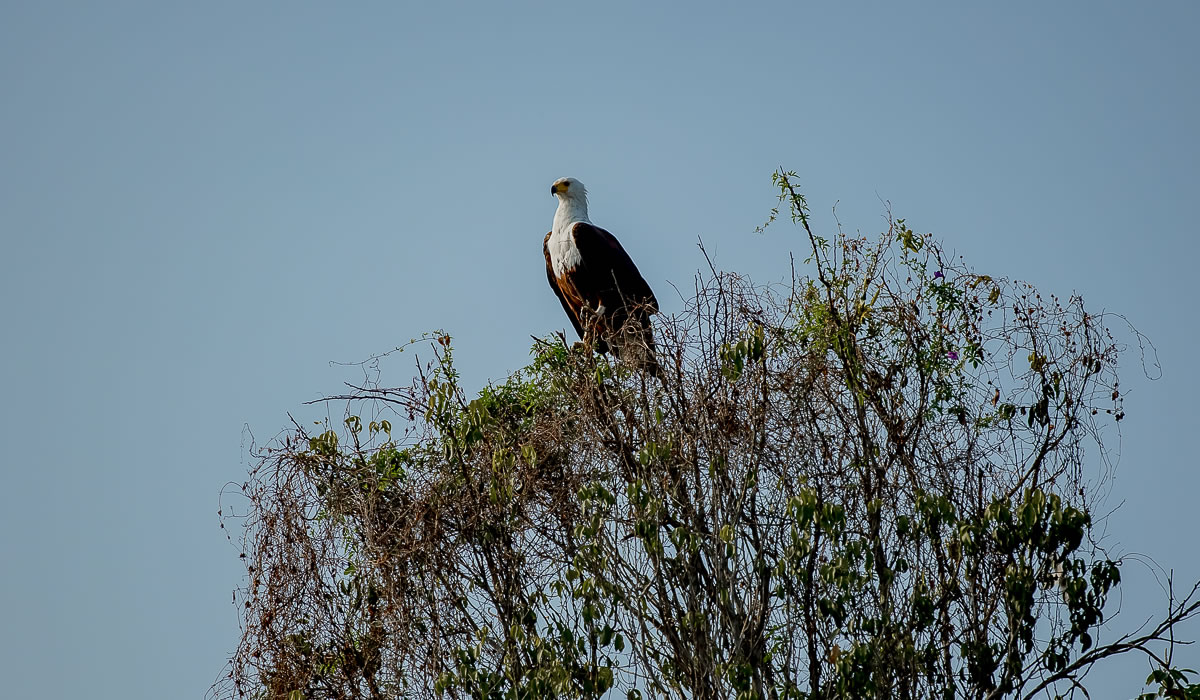Gishwati-Mukura National Park represents Rwanda’s newest and fourth national park, officially designated in 2015 as a beacon of forest restoration and conservation hope. Comprising two separate forest fragments, Gishwati and Mukura located in the western region of Rwanda, this 34-square-kilometer protected area tells a powerful story of ecological recovery and community-centered conservation. While smaller than Rwanda’s other national parks, Gishwati-Mukura offers visitors intimate primate encounters, pristine forest hiking, exceptional birdwatching opportunities, and the chance to witness conservation in action as degraded forests regenerate through dedicated reforestation efforts.

Location and Historical Background
Gishwati-Mukura National Park is situated in Rwanda’s western provinces, approximately 84 kilometers from Lake Kivu and roughly 140 kilometers from Kigali. The park consists of two distinct forest patches: the larger Gishwati Forest covering about 15 square kilometers and the smaller Mukura Forest spanning approximately 19 square kilometers, separated by a distance of around 25 kilometers. This location in the Albertine Rift region places the park within one of Africa’s most biodiverse zones, forming part of the critical corridor between Nyungwe Forest National Park to the south and Volcanoes National Park to the north.
The park’s history reflects both the challenges and possibilities of conservation in densely populated landscapes. During the 1970s, Gishwati Forest covered approximately 250 square kilometers of pristine montane rainforest teeming with wildlife. However, decades of deforestation, agricultural expansion, illegal mining, and the aftermath of Rwanda’s 1994 genocide reduced the forest to a fraction of its original size. By the early 2000s, less than 6 square kilometers of forest remained, with wildlife populations decimated and ecosystem services severely compromised. The transformation of these degraded forest remnants into a national park, coupled with ambitious reforestation initiatives, represents one of Rwanda’s most ambitious conservation projects and demonstrates the country’s commitment to environmental restoration and biodiversity protection.
Primate Species and Chimpanzee Encounters
Despite its relatively small size and troubled history, Gishwati-Mukura National Park supports a remarkable diversity of primate species that have survived against considerable odds. The park is home to two groups of eastern chimpanzees, totaling approximately 20 individuals, making it one of the smallest chimpanzee populations in East Africa but nonetheless significant for conservation. While these chimpanzees are not yet fully habituated for tourism like those in Nyungwe Forest, tracking experiences are being gradually developed, offering visitors a more raw and unpredictable wildlife encounter.
The park’s primate community extends beyond chimpanzees to include several monkey species that thrive in the regenerating forest habitat. Golden monkeys, more commonly associated with Volcanoes National Park, find refuge in the bamboo zones of Gishwati Forest, providing tracking opportunities at a more accessible location and often lower cost. L’Hoest’s monkeys, with their distinctive white beards and gentle demeanor, are regularly encountered along forest trails. Blue monkeys navigate the canopy with remarkable agility, while black-and-white colobus monkeys add dramatic contrast to the green forest backdrop with their flowing white mantles.
The presence of these primate populations in such a small, fragmented forest underscores the remarkable resilience of these species and the importance of protecting even seemingly marginal forest patches. Each primate encounter in Gishwati-Mukura carries additional significance as visitors witness species recovering in a landscape where they nearly faced local extinction just decades ago.
Reforestation and Ecological Restoration
The reforestation efforts underway in Gishwati-Mukura National Park represent one of Africa’s most impressive ecological restoration projects. Since the park’s establishment, hundreds of thousands of indigenous tree seedlings have been planted in degraded areas surrounding the core forest zones, gradually expanding forest cover and reconnecting fragmented habitats. These reforestation initiatives employ local community members, creating jobs while rebuilding ecosystems and demonstrating the economic benefits of conservation.
The restoration work focuses on planting native tree species that provide food and habitat for wildlife while improving watershed functions and preventing soil erosion. Species selection considers the needs of different wildlife groups, from fruit-bearing trees for primates and birds to bamboo for golden monkeys. The growing young forests showcase nature’s remarkable ability to recover when given protection and support, with wildlife increasingly using restored areas as habitat expands.
Visitors to Gishwati-Mukura can observe this restoration work firsthand, with opportunities to participate in tree-planting activities during their visit. These hands-on conservation experiences allow tourists to contribute directly to forest recovery while creating lasting memories and personal connections to the landscape. The visible transformation from degraded land to thriving young forest provides powerful testimony to what dedicated conservation action can achieve, offering hope for forest restoration projects elsewhere in Africa and around the world.
Birdwatching and Endemic Species
Gishwati-Mukura National Park has emerged as an increasingly important birdwatching destination, with over 230 bird species recorded despite the park’s small size. The forest’s location within the Albertine Rift Endemic Bird Area means it harbors several species found nowhere else on Earth, making it essential for birding enthusiasts pursuing regional endemics. The mix of mature forest, regenerating woodland, and forest-edge habitats creates diverse niches supporting varied avian communities.
Notable species that attract serious birders include the Albertine Rift endemics such as the mountain yellow warbler, Grauer’s warbler, purple-breasted sunbird, and the stunning Rwenzori turaco with its brilliant purple, blue, green, and red plumage. The park also hosts red-throated alethe, woodhoopoes, numerous sunbird species, and various raptors. The forest edges and regenerating areas support different species assemblages than mature forest interiors, allowing birders to observe how bird communities change across restoration gradients.
Birdwatching in Gishwati-Mukura offers a more intimate experience than larger parks, with fewer visitors and opportunities for patient observation. The relatively small area means birders can cover multiple habitat types in a single day, potentially encountering a high proportion of the park’s species list during focused birding sessions. Early morning excursions yield the best results when birds are most vocally active and engaged in feeding behaviors.
Hiking Trails and Waterfalls
The park features several hiking trails that wind through both mature forest and regenerating areas, providing opportunities to experience different stages of forest recovery. The Congo-Nile Trail, a long-distance hiking and biking route, passes near the park, and sections traverse the surrounding landscape of rolling hills, tea plantations, and rural communities. Within the park itself, guided nature walks range from short two-hour excursions to full-day hikes exploring deeper forest areas.
The trails lead to various points of interest including natural waterfalls that cascade through the forest, creating picturesque settings for photography and contemplation. These waterfalls remain impressive year-round, fed by the reliable rainfall that characterizes this montane region. The sound of falling water combines with birdsong and the rustling of primates in the canopy to create an immersive sensory experience that epitomizes the peace of undisturbed forest environments.
Hiking in Gishwati-Mukura differs from experiences in Rwanda’s larger parks, offering a more intimate and less-crowded atmosphere. The trails traverse varied terrain from steep slopes to gentle forest paths, suitable for moderately fit hikers. Local guides, many of whom previously relied on the forest for resources through unsustainable means, now lead visitors through the regenerating landscape, sharing their knowledge of forest ecology and their personal transformation stories as conservation stakeholders.
Community Engagement and Sustainable Development
The success of Gishwati-Mukura National Park depends fundamentally on positive relationships with surrounding communities who live in one of Rwanda’s most densely populated regions. Conservation initiatives in and around the park prioritize community benefits, ensuring that local people see tangible improvements in their lives resulting from forest protection. Revenue-sharing programs direct a portion of tourism income to community development projects including schools, health facilities, water systems, and road improvements.
Community-based enterprises have emerged around the park, offering cultural tourism experiences that complement wildlife activities. Visitors can participate in traditional activities such as coffee production, banana beer brewing, basket weaving, and cultural performances. These experiences provide income diversification for local families while enriching the visitor experience through authentic cultural exchange. Former hunters and illegal forest users have been trained as park rangers, guides, and hospitality workers, transforming potential adversaries into conservation champions.
Environmental education programs engage local schools and communities in understanding the value of forest conservation, watershed protection, and biodiversity. These initiatives cultivate long-term conservation values among younger generations who will determine the park’s future. The approach pioneered in Gishwati-Mukura demonstrates how conservation can succeed even in highly populated landscapes when communities are empowered as partners rather than excluded as obstacles.
Visitor Information and Tourism Development
As Rwanda’s newest national park, Gishwati-Mukura continues developing its tourism infrastructure and experiences. Current accommodation options near the park include community-run guesthouses and lodges in nearby towns, with plans for eco-lodges within or adjacent to the park as tourism increases. The park’s proximity to other attractions including Lake Kivu, Nyungwe Forest, and Volcanoes National Park makes it an excellent addition to comprehensive Rwanda itineraries.
Activities can be arranged through the Rwanda Development Board or local tour operators, with golden monkey tracking being the most developed tourism product currently available. Visitor numbers remain modest compared to Rwanda’s more established parks, offering advantages for those seeking less-crowded, more authentic wilderness experiences. The park is accessible by road year-round, though the wet seasons from March to May and October to November bring muddy conditions that make hiking more challenging.
Gishwati-Mukura National Park may not yet match the fame of Rwanda’s gorilla trekking or savanna safaris, but it offers something equally valuable: the opportunity to witness conservation success, support forest restoration, and experience biodiversity rebounding in a landscape where it nearly vanished. For environmentally conscious travelers seeking meaningful connections to conservation efforts and authentic wilderness experiences off the typical tourist circuit, Gishwati-Mukura represents Rwanda’s conservation future taking root and flourishing.

